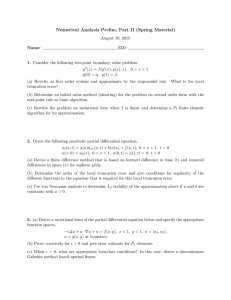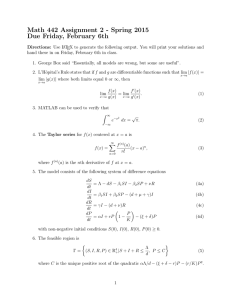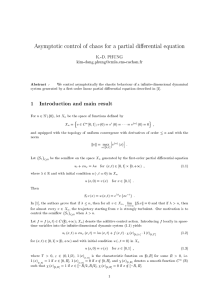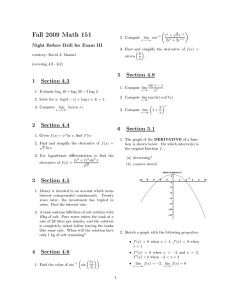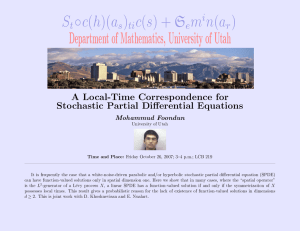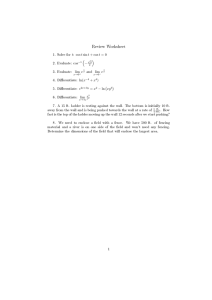Document 13183452
advertisement
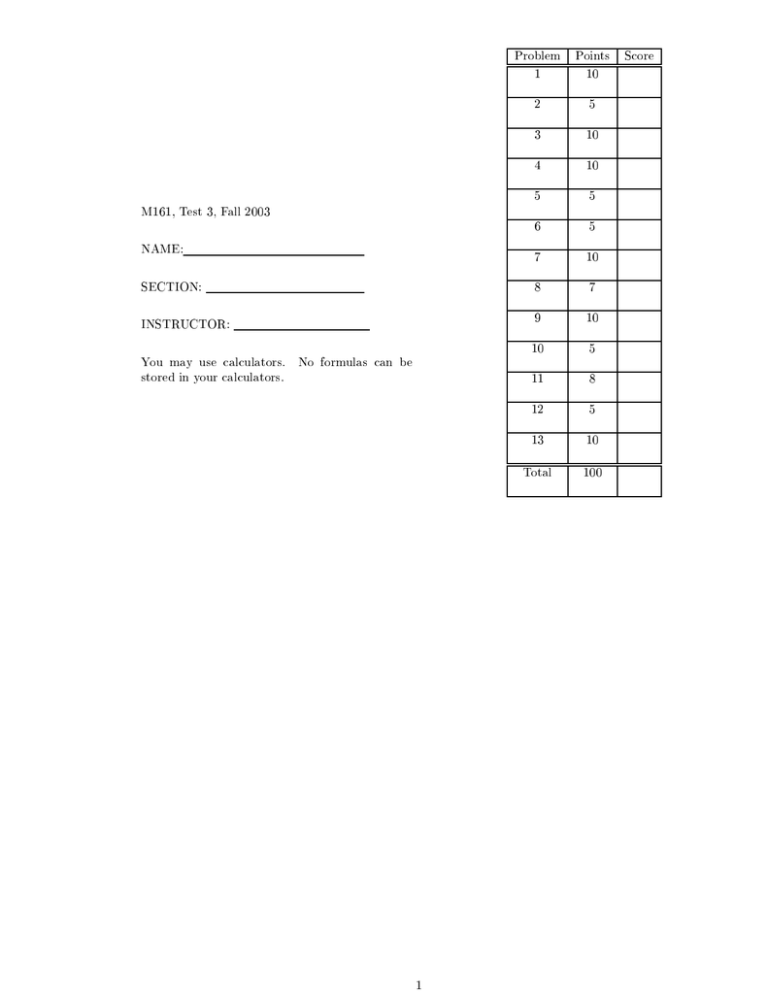
Problem Points 1 10 2 5 3 10 4 10 5 5 6 5 7 10 8 7 9 10 10 5 11 8 12 5 13 10 Total 100 M161, Test 3, Fall 2003 NAME: SECTION: INSTRUCTOR: You may use alulators. No formulas an be stored in your alulators. 1 Sore 1. Calulate the following limits. ln x (a) lim x! x 1 1 (b) lim x! 1 1 os(3x) + 3x x3 2. Use the integral test to show that the harmoni series diverges. 2 Z 3. Calulate the following integrals. You must show your work. p1 dx (a) 3 x 0 (b) Z 1 1 e t dt 2 3 4. (a) Find the 3rd degree (n=3) Taylor polynomial approximation of the funtion f (x) = x about the point a = 1. 2 (b) Use Taylor's Inequality (jRn (x)j nM jx ajn ) to estimate the auray of the approximation f (x) T (x) when x satises :9 x 1:1. +1 ( +1)! 3 4 X 5. Determine whether the series is onvergent or divergent. In either ase justify your answer. 1 n =1 n n2 +n+1 Z 6. The 3rd order Taylor expansion for the funtion f (x) at a = 0 is given by f (x) = 1 x f 00 (0) f 000 (0) 0 x (t x) f (t) dt. Find the 4th order Taylor f (0) + f (0)x + x + 2! 3! 3! expansion of the funtion f about a = 0 by integration by parts. 2 3 3 0 5 (4) 7. Determine whether the following sequenes onverge or diverge. If the sequene onverges, nd the limit. (a) an = os(n=2) (b) an = 3 + ( 1)n 5n 2 8. (a) Determine if the sequene an = 3=(n + 5) is inreasing or dereasing. Show why or why not. (b) Is it a monotoni sequene? 6 9. The rate of hange of enrollment at a university is proportional to the enrollment at any time t. Supppose there were 20; 000 students in 1980 and 30; 000 students in 1990. (a) Write a dierential equations that models the enrollment at the university. (b) Find an expression for the enrollment at any time t (solve the dierential equation and determine the onstants). 10. Solve the following dierential equation. 1+x dy = , x > 0, y (1) = 4 (Solve for y ). dx xy 7 11. The denition of lim an = L is as follows: A sequene fan g has the limit L and we write n!1 lim an = L if for every > 0 there exists an N so that if n > N then jan Lj < . n!1 (a) Prove that lim rn = 0 when 1 < r < 1 and r = 6 0 by showing that for every > 0 there n!1 exists an N so that if n > N then jrn 0j < . (b) Prove that lim rn = 0 when r = 0 by showing that for every n!1 that if n > N then jrn 0j < . 8 > 0 there exists an N so 12. Find the sum of the series Xn 1 n =3 1 . 2 13. Determine whether the series is absolutely onvergent, onditionally onvergent or divergent. In any ase explain why. You must justify your answers. 1 1 ( 1)n p (a) n+2 n X =0 (b) X 1 n =1 ( 1)n n e n 9
